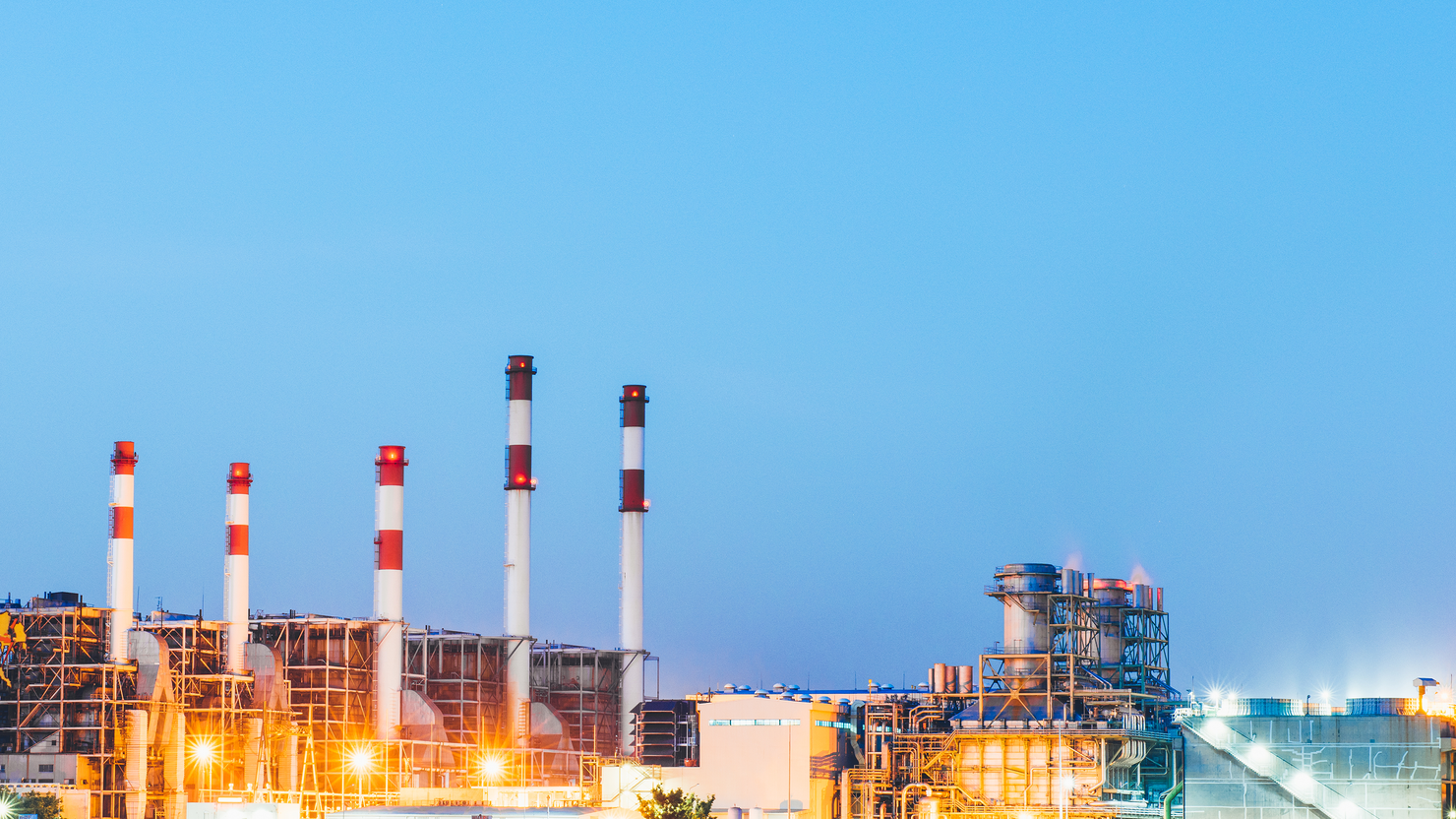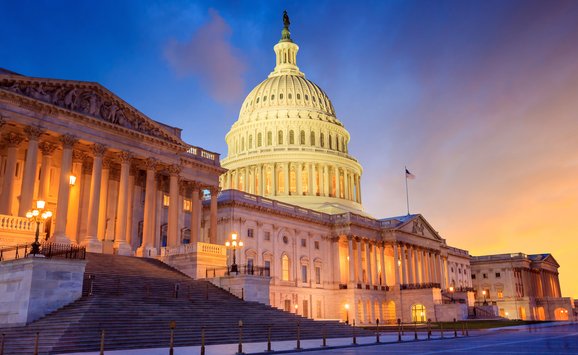A simple model described here shows how emissions markets and policy change can feed back on each other. In this example of an upcoming referendum to repeal a new cap-and-trade program in Washington State, the price of emissions allowances can affect—and be affected by—anticipated voter behavior.
In 2021, the Washington State Legislature passed a climate cap-and-trade program that went into effect at the beginning of 2023. This fairly ambitious cap-and-trade program—the second statewide program in the United States after California—requires each ton of greenhouse gas emissions from regulated sources (think power plants and oil refineries, the latter of which are also responsible for the end-use emissions of the gasoline they sell) to hold enough “allowances” to cover those emissions. To manage compliance, companies can trade these allowances between them and even save (or “bank”) allowances for later. The result of this process is that a new financial product—an emissions allowance—enters into existence, and the market determines its price.
Well, after launching, the market in Washington State determined that the right price was higher than many observers had anticipated: the first auction cleared at a price of $48.50 per metric ton of carbon dioxide, before rising to $63 per ton last fall. Compare these figures to prices in the mid-to-high $30s range in California, or around $15 in the Regional Greenhouse Gas Initiative. The unexpectedly high prices led to Washington refineries passing much of the costs on to consumers, pushing up gasoline prices in Washington State by around 40 cents per gallon, according to a calculation by economist Yoram Bauman. Public consternation over increased gas prices caused political headaches for Washington policymakers, and, in January, a Washington hedge fund executive successfully funded an effort to gather enough signatures to add a referendum to the election ballot this November to completely repeal the cap-and-trade program, citing its impacts on gas prices.
And the markets seem to think that the referendum has a decent chance of passing, in which case the cap would disappear. Since allowances derive their value from the existence of the cap-and-trade program, the possibility of the referendum passing—which would render existing allowances worthless—would meaningfully affect allowance prices. Indeed, allowance prices fell in the ballpark of 40% over the course of January, when the state government officially certified the initiative to appear on the November ballot.

These developments raise some interesting interactions between economics and political economy in the Washington allowance market. Because they can be “banked” from one year to the next, emissions allowances are financial products that are subject to the same economic principles that govern other financial assets like stocks or commodities. One important economic principle is the “no-arbitrage condition,” which links today’s market prices with an expected future price. For example, if an allowance suddenly has some chance to be worthless next year—call it a 40% chance—then the market value today should reasonably be expected to drop by a similar 40%. In fact, my RFF colleague Billy Pizer and I wrote a paper in 2020 that considers this very issue: how anticipated policy changes in cap-and-trade mechanisms can produce this kind of (often undesirable) volatility in cap-and-trade programs, as compared to carbon taxes, for example, that would not vacillate in response to anticipated changes in political winds.
What we didn’t consider in that paper, however, was the political-economy dynamic; namely, a market reaction to an anticipated change in policy could itself feed back into the likelihood of that very change getting implemented. Specifically, the hypothesized 40% drop in allowance prices also should translate into lower prices at the gas pump—perhaps rendering the argument for repeal less salient to voters, which may in turn feed back and reduce the chance that the vote passes.
How might these two features of economic and political forces balance? In this blog post, I develop an exceedingly simple economic model that combines these two forces, yielding an equilibrium allowance price. All the math of the model is available at the end of this article; for simplicity, I will just explain the two components in words here.
The first piece is the standard no-arbitrage condition: the market price of an allowance that has some chance of remaining valuable should be equal to the expected discounted future value of the allowance. If the cap-and-trade program has some probability of survival, then the market price should be that survival probability multiplied by the future market value that would prevail if the program survives, discounted to the present. Let’s assume that the relatively high market prices that we saw in the fall of 2023—predating the ballot initiative—are a good indicator of the price that’s expected if the program survives the vote. Those market prices were in the range of $50–$70 per ton; let’s call it $60. We’ll also use a discount rate of 5%, but the exact discount rate doesn’t turn out to matter very much. Together, this calculation means the equilibrium market price today should be equal to the probability that the referendum fails, multiplied by $57 (= $60 / (1 + 5%)).
The second piece is the political-economy factor: How does the probability of the referendum passing or failing depend on the gas prices that voters experience, as affected by the allowance price? We don’t have an obvious way to estimate that relationship, so let’s just make up something simple that sounds reasonable. First, let’s assume that, if the allowance price were zero dollars, voters would have no motivation to repeal the program, so the referendum would have a 100% chance of failure. Next, let’s somewhat arbitrarily assume that each dollar increase in the allowance price increases the chance of the referendum passing by 1%, so that the referendum would be sure to pass if prices hit $100 per ton. For context, $100 per ton is a level that could result in an increase in gas prices of around $1 per gallon. All this, of course, assumes that households dislike higher allowance prices on net, which is reasonable in the case of Washington, where revenues from auctioned allowances are directed toward emissions-cutting investments, rather than being rebated directly to households.
The implications of these two assumptions are shown in Figure 1. The blue line shows how the no-arbitrage relationship implies that the market price rises with the probability that the program survives the referendum. The orange line shows the impact of the allowance price on that same probability: the higher the price, the higher the likelihood that voters will pass the referendum to repeal the cap. The equilibrium is the intersection of these two points. Where is that equilibrium? Eyeballing the result is easy enough: a market price of $36 per ton alongside a 64% chance that the program survives, implying a 36% chance of repeal. What was the actual market price as of early February? $35 per ton, which is 35% lower than the price last December of $54.20. These empirical prices are almost exactly what the simple model predicts. Ain’t economics grand?
Figure 1. Combining the Feedback Effects between Allowance Prices and the Referendum’s Chance of Passage
Ok, ok, you may think I chose just the right input values to match the recently observed market trends. If I had picked different values for the four model inputs, the result would of course be different. But I truthfully chose the model parameters first before evaluating whether they fit the data. And the results are largely insensitive to most of the inputs. The most sensitive input is the assumption of a one-to-one impact of the allowance price on the chance the vote passes, which is the slope of the orange line. If I had assumed a two-to-one relationship, the orange line would have a flatter slope, and the equilibrium would be a 47% chance that the program survives and a $27 allowance price, which is different, but not by a large margin. You can play with Figure 1 to show how the model results change when you tinker with the assumptions.
Of course, this model is exceedingly simple and does not reflect other factors that drive these markets. Other relevant factors include other anticipated policy changes that may be in store, even if the cap-and-trade program survives the referendum. These potential policy changes include, for instance, proposals by the state to increase allowance supply in hopes of decreasing high allowance prices. Another relevant policy now under consideration is linking Washington’s cap-and-trade program with California’s, which would bring down Washington’s allowance prices more in line with California’s mid-to-high $30s range. However, the likelihood and timeline for that linkage being put in place remains unclear, suggesting that recent trends of low allowance prices are more due to the potential that the repeal will pass. Nonetheless, the simple model highlights interesting interactions between policy updates and allowance markets that we’ve previously highlighted in our research.
Mathematical Details
No-arbitrage condition: The market price equals the discounted expected future price, conditional on the price that would prevail if the Washington State cap-and-trade program survives: When \( \tau_t = \beta \mathbb{E}[\tau_{t+1}] = \beta p \tau^{surv}_{t+1} \), where \( \tau_t \) is the allowance price today, \( \tau^{surv}_{t+1} \) is the price in the future, conditional on the program surviving, \( \beta = \frac{1}{1 + r} \), where \( r \) is the discount rate, and \( p \) is the probability that the referendum fails and therefore the program survives.
Voting relationship: The probability of the cap-and-trade program surviving the vote declines with the current allowance price \( \tau_t \). For simplicity, we make this a linear function: \( p = a - b\tau_t \) for \( a, b > 0 \).
Equilibrium: Combining terms yields the equilibrium price \( \tau^*_t \) and probability \( p^* \): \[ p^* = a - b\beta p^* \tau^{surv}_{t+1}, \]
Rearranging yields the equilibrium probability and price: \[ p^* = \frac{a}{1 + b\beta \tau^{surv}_{t+1}}, \] \[ \tau^*_t = \frac{\beta a \tau^{surv}_{t+1}}{1 + b\beta \tau^{surv}_{t+1}}. \]
These values represent the equilibrium intersection in the figure.






